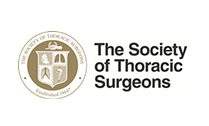Interstitial Lung Disease/ Pulmonary Fibrosis
The interstitium of the lung refers to the supportive tissue or membrane surrounding the air passages. It contains blood vessels for the exchange of gases (oxygen and carbon dioxide). Interstitial lung diseases are a group of conditions characterized by the thickening of this membrane due to inflammation, scarring and fluid accumulation within this tissue.
There are many types of interstitial lung diseases.
- Interstitial pneumonia is caused by infection from bacteria, viruses or fungi.
- Idiopathic pulmonary fibrosis is characterized by progressive scarring of the interstitium.
- Sarcoidosis is a condition where interstitial lung disease may occur with swollen lymph nodes as well as heart, skin, nerve, eye and nerve problems.
- Nonspecific interstitial pneumonitis is linked to autoimmune conditions such as rheumatoid arthritis.
- Other types may be caused by smoking and exposure to dust, asbestos, irritants and certain medications.
The main symptom of interstitial lung disease is progressive shortness of breath. Other symptoms include cough and weight loss.
When you present to the clinic with a cough or shortness of breath, your doctor will review your symptoms and perform a chest X-ray to look for fine lines in the lungs. CT scans may be ordered for a detailed view. Pulmonary function tests may be performed to check lung function. A sample of lung tissue (biopsy) may be obtained through minor or open surgical procedures to be examined in the laboratory.
The treatment for interstitial lung disease varies according to its cause, type and severity. Interstitial pneumonia is treated with antibiotics. Your doctor may prescribe steroids or other medication to treat infections, suppress the immune system and reduce inflammation. Oxygen therapy may be recommended for those with reduced oxygen levels. Severe cases may require a lung transplant.



















